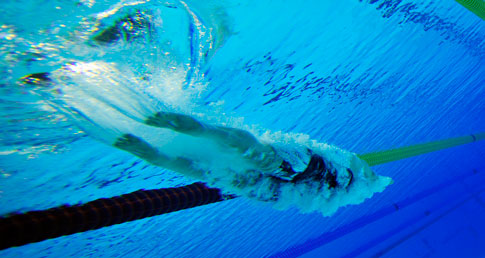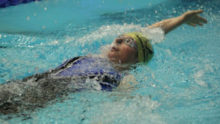
Alan Rowson explains Masters swimming age adjustment
January 8, 2015Trafford Masters swimmer Alan Rowson explains Masters swimming age adjustment and the different approaches which have been used in the UK, including his own Formulae.
Age adjustment
In simple terms, age adjustment provides a mechanism for comparing the performance of swimmers of differing ages for each event. All the approaches used in the UK have involved converting the actual time swum for an event to an age adjusted time.
Different approaches have been used to calculate age adjusted times. In the UK we are aware of three approaches; the Finnish Formula, Pitcher Tables and Alan Rowson Formulae.
The Finnish Formula was created in 1995 and was brought to the UK in 1996 by Duncan McCreadie. Soon after this the Pitchers were aware of the shortfalls of the Finnish Formula and created conversion tables for their local competitions for six events. The tables were derived by using the world records as of 1996.
The Finnish Formula became the more commonly used age adjustment approach. It was adopted as the basis for adjusting times for the Masters Decathlon Competition.
Over the years the shortfalls of the Finnish Formula were raised, especially as it was being used by the Decathlon. The main two short falls were its perceived inaccuracy for older swimmers and it had an upper age limit of 97. John Harrison was thus excluded from the Decathlon when he became 98 years old.
A 2012 review of the system
In 2012, I undertook a review of age adjustment. The above shortfalls were confirmed as well as other issues. The conclusion was that one formula was not accurate enough to cover all events. The solution was to provide a formula per event per gender, known as Alan Rowson Formulae.
- Click here for full details of this review.
These Formulae work by comparing swimmers’ times to the Masters world record time for their age. If you have two swimmers of different ages swimming a time that is the same percentage of the time of the world record for that age, it would be reasonable to say they have performed equally.
As a simple example to demonstrate this, if you have a swimmer 1, age 25, who swims 24 seconds for an event that has a record of 20 seconds, they would be swimming at 120% of record pace. A second swimmer, age 75, who swims 36 seconds for an event that has a record of 30 seconds, would also be swimming at 120% of record pace. Thus, the two would have swum to an equal level compared to the world record for their age. So we could say the two swimmers have swum equally well.
Having determined how a swim for any age compares to its world record, the time for this level of performance is then converted to the time for a comparable performance by a 25 years old swimmer. So in the example above the 75 year old swimmer would be credited with a time of 24 seconds.
It sounds simple to compare times for each swim against world records. However, as you know, Masters records do not exist for every age – there are only records for five-year age bands, i.e. 25-29, 30-34, 35-39 etc.
Determining theoretical world records
So the first step is to determine theoretical world records for each age. This is done mathematically. I won’t go into too much detail about how this is done but the pragmatic approach was to use the record for each age group as the record set by someone of the youngest age within that age group. So use record for 25-29 for 25 year old, record for 30-34 for 30 year old.
To a large extent this approach is supported by empirical evidence of swimmers training extra hard on the year they age up. As an example, the following chart plots the Masters world record for Men’s 50m Breaststroke and shows a best fit line through these points. The best fit line smoothes out any anomalies. Using the equation for the line, theoretical world records for each age are calculated. This includes theoretical world records for the ages 25, 30, 35 etc.

A set of theoretical world records for all events for all ages have been calculated in this way and the Alan Rowson Formulae use these to convert an actual time to an age adjusted time.
World records are continually being broken so a decision was made to update the base theoretical world records annually based on the records published on the FINA website at the end of each year. The Alan Rowson Formulae are re-created annually using the new records.
If you have any queries about age adjustment email me at [email protected]
 Masters Swimming Hub
Masters Swimming Hub





